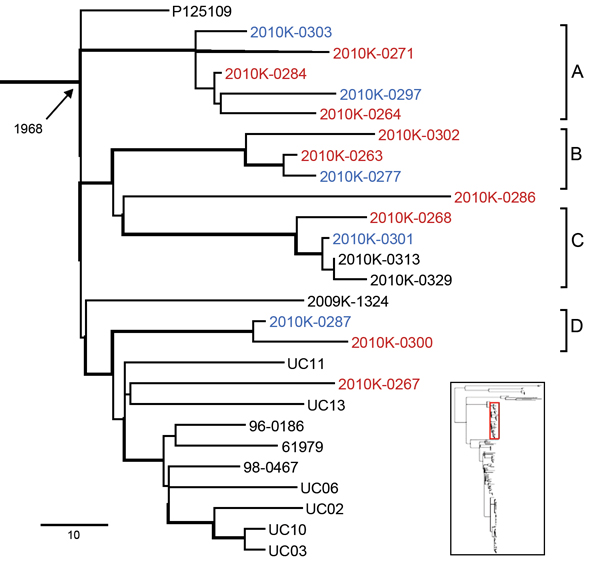Volume 20, Number 9—September 2014
Research
Genomic Epidemiology of Salmonella enterica Serotype Enteritidis based on Population Structure of Prevalent Lineages
Figure 3

Figure 3. Salmonella enterica serotype Enteritidis genetic lineage III. Isolates from human blood and stool samples are indicated by red and blue, respectively. Four clades are highlighted and designated A–D, representing individual outbreak clades identified from clinical cases in Thailand in 2008. Branches with bootstrap value >0.9 are indicated by thickened lines. Age of the ancestral node (median most recent common ancestor) is labeled. Inset indicates the location of the highlighted lineage on the global phylogenetic tree.
1These authors contributed equally to this article.
Page created: August 13, 2014
Page updated: August 13, 2014
Page reviewed: August 13, 2014
The conclusions, findings, and opinions expressed by authors contributing to this journal do not necessarily reflect the official position of the U.S. Department of Health and Human Services, the Public Health Service, the Centers for Disease Control and Prevention, or the authors' affiliated institutions. Use of trade names is for identification only and does not imply endorsement by any of the groups named above.